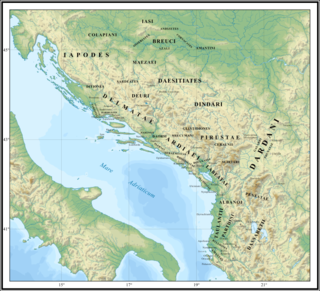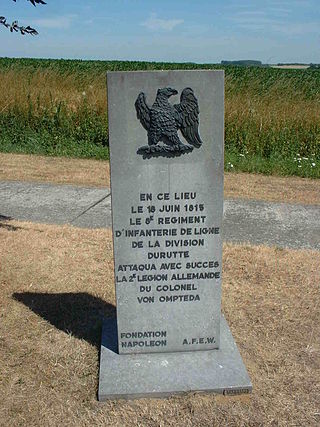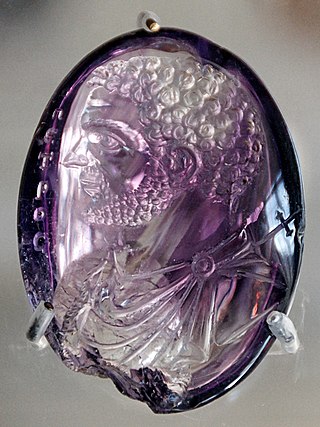Related Research Articles

Hoplites were citizen-soldiers of Ancient Greek city-states who were primarily armed with spears and shields. Hoplite soldiers used the phalanx formation to be effective in war with fewer soldiers. The formation discouraged the soldiers from acting alone, for this would compromise the formation and minimize its strengths. The hoplites were primarily represented by free citizens – propertied farmers and artisans – who were able to afford a linen armour or a bronze armour suit and weapons. It also appears in the stories of Homer, but it is thought that its use began in earnest around the 7th century BC, when weapons became cheap during the Iron Age and ordinary citizens were able to provide their own weapons. Most hoplites were not professional soldiers and often lacked sufficient military training. Some states maintained a small elite professional unit, known as the epilektoi or logades since they were picked from the regular citizen infantry. These existed at times in Athens, Sparta, Argos, Thebes, and Syracuse, among other places. Hoplite soldiers made up the bulk of ancient Greek armies.s

Infantry is a specialization of military personnel who engage in ground combat on foot. Infantry generally consists of light infantry, irregular infantry, heavy infantry, mountain infantry, motorized infantry, mechanized infantry, airborne infantry, air assault infantry, and naval infantry. Other types of infantry, such as line infantry and mounted infantry, were once commonplace but fell out of favor in the 1800s with the invention of more accurate and powerful weapons.

In classical antiquity, Illyria was a region in the western part of the Balkan Peninsula inhabited by numerous tribes of people collectively known as the Illyrians.

Sir John Hubert Marshall was an English archaeologist who was Director-General of the Archaeological Survey of India from 1902 to 1928. He oversaw the excavations of Harappa and Mohenjo Daro, two of the main cities that comprise the Indus Valley Civilisation.

Immortals or Persian Immortals was the name given by Herodotus to an elite heavy infantry unit of 10,000 soldiers in the army of the Achaemenid Empire. The unit served in a dual capacity through its role as imperial guard alongside its contribution to the ranks of the Persian Empire's standing army. While it primarily consisted of Persians, the Immortals force also included Medes and Elamites. Essential questions regarding the historic unit remain unanswered because authoritative sources are missing.

Arame or Aramu was the first known king of Urartu.

A stele, or occasionally stela, when derived from Latin, is a stone or wooden slab, generally taller than it is wide, erected in the ancient world as a monument. The surface of the stele often has text, ornamentation, or both. These may be inscribed, carved in relief, or painted.

The Companions were the elite cavalry of the Macedonian army from the time of King Philip II of Macedon, achieving their greatest prestige under Alexander the Great, and regarded as the first or among the first shock cavalry used in Europe. Chosen Companions, or Hetairoi, formed the elite guard of the king (Somatophylakes).

The Agrianes or Agrianians, were a tribe whose country was centered at Upper Strymon, in present-day central Western Bulgaria as well as southeasternmost Serbia, at the time situated north of the Dentheletae. Per Strabo the source of the river Strymon was within Agrianes' territory. In the times of Philip II of Macedon, the territory of the Agrianes was administered by Pella. They were crack javelin throwers and an elite unit of Alexander the Great's light infantry, who fought under the command of General Attalus.
The Mesopotamian Civilization had an adept grasp of tactics. In fact, they are the first confirmed users of the shield wall tactic later made famous as the classical Greek phalanx and the Roman "testudo formation". It is unknown who first developed this tactic, but it is thought to have been developed somewhere between 2500 B.C.E and 2000 B.C.E
Nergal-ushezib, originally Shuzub, was a Babylonian nobleman who was installed as King of Babylon by the Elamites in 694 BC, after their capture of Babylon and deposition and murder of the previous king Ashur-nadin-shumi, son of King Sennacherib of Assyria.
Sir John Boardman, is a classical archaeologist and art historian. He has been described as "Britain's most distinguished historian of ancient Greek art."

A stateless society is a society that is not governed by a state. In stateless societies, there is little concentration of authority; most positions of authority that do exist are very limited in power and are generally not permanently-held positions; and social bodies that resolve disputes through predefined rules tend to be small. Different stateless societies feature highly variable economic systems and cultural practices.
This article lists historical urban community sizes based on the estimated populations of selected human settlements from 7000 BC – AD 1875, organized by archaeological periods.

The Pons Aemilius is the oldest Roman stone bridge in Rome. Preceded by a wooden version, it was rebuilt in stone in the 2nd century BC. It once spanned the Tiber, connecting the Forum Boarium, the Roman cattle market, on the east with Trastevere on the west. A single arch in mid-river is all that remains today, lending the bridge its name Ponte Rotto.

The question of the race of ancient Egyptians was raised historically as a product of the early racial concepts of the 18th and 19th centuries, and was linked to models of racial hierarchy primarily based on craniometry and anthropometry. A variety of views circulated about the racial identity of the Egyptians and the source of their culture.

An engraved gem, frequently referred to as an intaglio, is a small and usually semi-precious gemstone that has been carved, in the Western tradition normally with images or inscriptions only on one face. The engraving of gemstones was a major luxury art form in the Ancient world, and an important one in some later periods.
Kakanj culture was an early Neolithic culture that appeared in Central Bosnia and covered periods dated from 6230–5990 to 5300–4900 BC.
References
- ↑ Boardman, John (1988-11-25). The Cambridge Ancient History: Plates to Volume 4 - John Boardman - Google Books. Cambridge University Press. ISBN 9780521305808 . Retrieved 2012-02-16– via Google Books.
- ↑ "Soldiers in ancient times: army units, archers, shield-bearers, slingers, spearmen, heavy infantry". Bible-lands.net. Retrieved 2012-02-16.
- ↑ "Civilization V: Ancient Era Units Guide". GamerStrategy. Retrieved 2012-02-16.